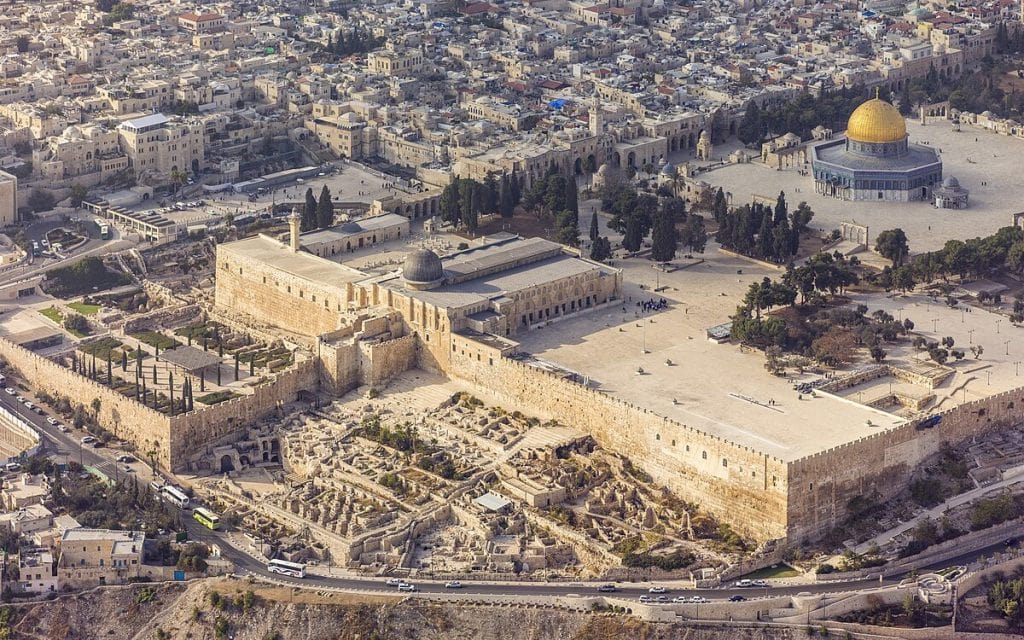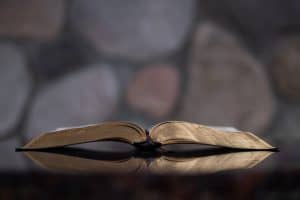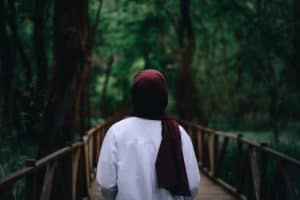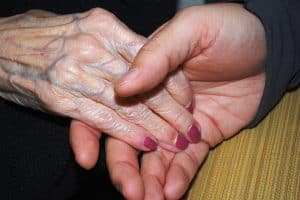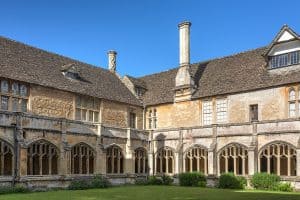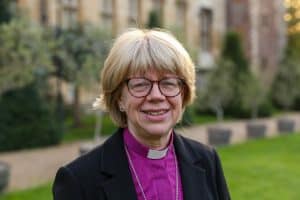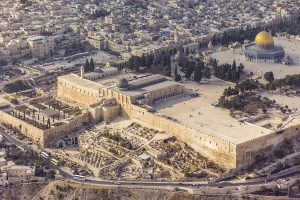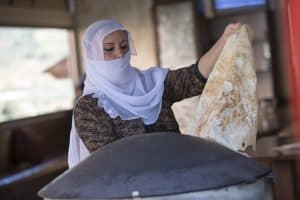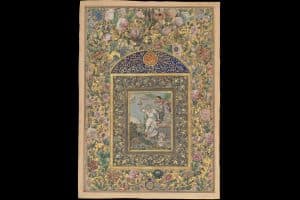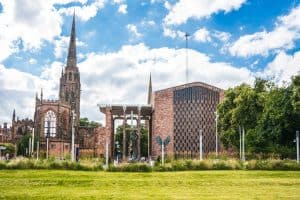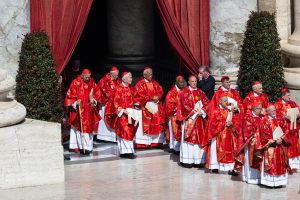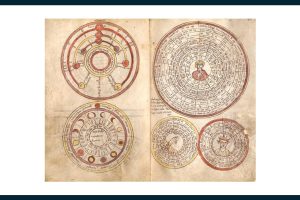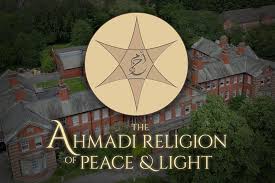By Ruth Marks Eglash
In the heart of Jerusalem’s Old City — touching the edges of the Jewish and Muslim Quarters — sits an expansive raised esplanade surrounded by high walls and accessible by several heavily guarded gates. This is the Temple Mount, or Haram al-Sharif — Jerusalem’s flashpoint site. Ruth Marks Eglash explains
What is it?
Beneath olive, cypress, and date trees, the cobblestoned courtyard measuring 144,000 square metres (35 acres) contains two prominent structures that dominate Jerusalem’s skyline — one is the silver-domed al-Aqsa Mosque; the other is the gold-capped Dome of the Rock.
For Muslims, the site — known as Haram al-Sharif, or the Noble Sanctuary — is the third-holiest place in Islam, after Mecca and Medina.
The site is also revered by Jews, who refer to it as Har HaBayit, or the Temple Mount. This is the holiest spot in Judaism, believed to have once housed the First and Second Jewish Temples, including the inner sanctuary known as the Holy of Holies.
Why is this site holy?
Many Jews — and Christians — believe this site is Mount Moriah, mentioned in the Book of Genesis as the spot where Abraham prepared to sacrifice his son, Isaac.
Jewish tradition holds that this is also the spot of the foundation stone, considered the original point of creation.
For Muslims, it is believed to be the where the Prophet Muhammad ascended to heaven during his Night Journey.
What were the Jewish temples that stood there?
Sitting between Mount Zion to the west and the Mount of Olives to the east, Jewish tradition maintains that Mount Moriah — and Jerusalem — was captured by King David, who turned it into his capital and renamed it the City of David.
His son, King Solomon, built the first Jewish Temple here in 957BCE. Famed for its splendour, the temple is believed to have housed the Ark of Covenant — the gold-plated wooden chest that contained the Ten Commandments that were handed by God to Moses on Mount Sinai.
The Encyclopedia Britannica describes the first temple as small, but with an “extensive” courtyard. It faced eastward, was oblong and consisted of three equally sized rooms: the vestibule; the main room of religious service; and the Holy of Holies, where the ark was kept.
This Temple was destroyed during the Babylonian siege of Jerusalem in 587-586BCE, leading to the Jewish exile from Jerusalem.
The second temple, also known as Herod’s Temple, was completed in 516BCE and later expanded by Herod the Great in 18BCE. That temple, which historians believe was not as grand as the original — yet still served as the chief place of worship for the Jewish people — was destroyed in 70CE, at the height of the First Jewish-Roman War, during the Roman siege of Jerusalem.
What are the Muslim shrines built there?
The Dome of the Rock and the Al-Aqsa Mosque, also known as the Quibli Mosque, were built on the site in the seventh and eighth centuries in keeping with the Islamic belief that the Prophet Muhammad made the journey from Mecca arriving at that spot in Jerusalem.
Encyclopedia Britannica cites Islamic sources, including the Quran, that tell how Muhammad was “miraculously transported one night from Mecca to a site in Jerusalem, known as al-masjid al-aqṣā, “the farther place of worship”.
On that spot, he is said to have led Abraham, Moses, Jesus, and other messengers of God in prayer. Muhammed is also believed to have had his own encounter with God there.
What happened in 1967?
During the Six-Day War in 1967, Israel captured East Jerusalem, including the Old City and the Temple Mount/Haram al-Sharif, from Jordan.
Israel later annexed the territory — in a move still not recognised by most of the international community — but under the ceasefire agreement agreed to allow Jordan to maintain control of the holy site.
What is the site’s status quo?
A fragile understanding, known as the “status quo”, has governed the Temple Mount/Haram al-Sharif since the 1967 armistice, which also allowed the Waqf Islamic trust to retain custodianship.
Under the status quo, Muslims are allowed to pray at the compound, while non-Muslims, including Jews, may visit during designated hours but are forbidden from praying there.
Israel’s Chief Rabbinate has reinforced that status over the ensuing decades, declaring that Jewish prayer at the site is prohibited for halakhic, or religious legal, reasons.
Peace Now, an Israeli liberal advocacy organisation, says that “both sides refrained from formulating the understandings in writing”, leaving the arrangement vulnerable to political pressure and interpretation.
Where do Jews pray?
Since Jewish prayer is restricted on the Temple Mount, Jews traditionally pray at the Western Wall, or Kotel, a retaining wall of the Second Temple compound next to and slightly below the plaza.
Muslims refer to that area as al-Buraq Wall, linking it to the Prophet Muhammad’s celestial steed. Peace Now notes that until the 1967 war, Muslims would also pray at the wall, but after the war, Israel demolished buildings in the area, and converted it into a Jewish prayer zone.
Have Jewish groups challenged the status quo?
For decades, a handful of radical groups have sought to replace the al-Aqsa Mosque and the Dome of the Rock with a third Jewish temple, but successive Israeli governments managed to rein them in.
In recent years, however, the push for a greater Jewish presence at the site, including allowing Jewish prayer, has been growing, especially among religious Jewish nationalists, even as ultra-Orthodox rabbis still prohibit it. The demand has sparked clashes on the ground in Jerusalem and led to accusations by Palestinians and the broader Muslim world, especially in the Middle East, that Israel is attacking Islam and attempting to erase its holy sites in the city.
Such accusations also stem from the fact that while the Waqf manages the site, access to it is controlled and secured by the Israel Police. During times of heightened tension, the police impose restrictions on entry into the compound.
The restrictions and the growing prominence of Jews visiting the site are seen by Muslims as a violation of the status quo.
Have Muslims violated the status quo?
Some in Israel have accused the Waqf of violating the status quo by carrying out building or renovation work at the site. In the 1990s, Israel also complained that antiquities found on the Temple Mount were being intentionally destroyed by the Waqf.
Additionally, in 1996, they decried the establishment of a new mosque at the site, which the Waqf said was a response to Israel opening of a tunnel for tourism that snakes beneath the plaza.
What of the site’s role in the Israeli-Palestinian conflict?
While the Muslim Waqf is the administrative body responsible for the day-to-day management of the Temple Mount/Haram al-Sharif, and the Jordanian government holds the official responsibility based on the peace agreements between Israel and Jordan in 1994, the Al-Aqsa Mosque is a central landmark of the Palestinian national identity.
Throughout the years, tension at the site between Jews and Muslims have set off fighting between Israelis and Palestinians.
Even before Israel’s creation, the site was contested. In August 1929, a group of Jews raised a flag at the Western Wall, which sparked riots from the Palestinian population leading to a week of violence, in which 133 Jews and 116 Arabs were killed and more than 200 wounded.
In 2000, the Israeli politician Ariel Sharon, who later became prime minister, visited the site, sparking Palestinian protests and clashes that escalated into the Second Intifada, or Palestinian uprising against Israel. The Second Intifada lasted through 2005.
Similarly, clashes between Palestinians worshippers and Israeli police at the site set in 2021 led to a 10-day war between Israel and Hamas in Gaza.
Additional resources for journalists
Academic experts
Dr Amnon Ramon, Jerusalem Institute for Policy Research
Professor Menachem Klein, Bar-Ilan University, Israel
Khaled Abu Toameh, senior fellow, Jerusalem Center for Security and Foreign Affairs
Non-governmental organisations
Ir Amim, Jerusalem-focused policy and advocacy
Terrestrial Jerusalem, Israeli organisation monitoring changes in Jerusalem
Peace Now, Israeli organisation advocating peace between Israelis and Palestinians
Jerusalem Story Palestinian organisation dedicated to telling the Palestinian narrative
Waqf and religious authorities
Jordanian Ministry of Awqaf
Chief Rabbinate of Israel
Islamic Waqf Council in Jerusalem
Media and think tanks
International Crisis Group
Middle East Institute
Haaretz Jerusalem explainer
BBC Profile of Temple Mount

